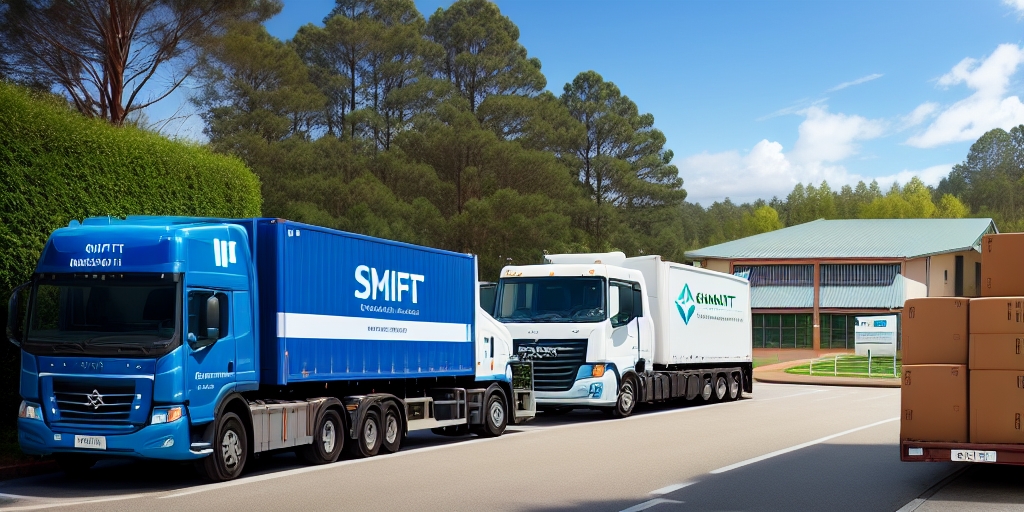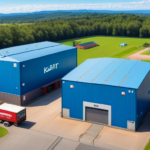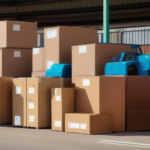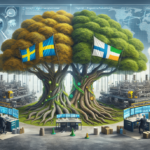Smurfit Kappa vs Georgia-Pacific: A Comprehensive Comparison
In the competitive world of paper packaging, two industry leaders stand out: Smurfit Kappa and Georgia-Pacific. With extensive histories and significant market presence, these companies continuously vie for dominance in the global packaging sector.
Overview of Smurfit Kappa and Georgia-Pacific
Smurfit Kappa and Georgia-Pacific are among the top global players in the paper packaging industry, commanding a combined market share exceeding 20%. Their diverse product offerings include corrugated boxes, paper bags, and tailored packaging solutions for various sectors, including food and beverage.
Historical Background and Evolution
Smurfit Kappa: From Humble Beginnings to Global Leader
Founded in Dublin, Ireland, in 1934 as a small packaging firm, Smurfit Kappa has grown exponentially through strategic mergers and acquisitions. Today, it operates in 35 countries with a workforce of over 46,000 employees worldwide. The company's focus on sustainability and innovation has been pivotal in its expansion and market leadership.
Georgia-Pacific: Diversification and Growth
Georgia-Pacific, established in Augusta, Georgia, in 1927, initially specialized in hardwood lumber. Over the decades, it diversified into paper and packaging, becoming one of the largest privately-owned companies in the United States. With over 30,000 employees and operations across North America and Europe, Georgia-Pacific has solidified its position in the paper packaging market.
Market Position and Financial Performance
Market Share and Global Presence
In the paper packaging industry, Smurfit Kappa leads in Europe with a 20% market share, while Georgia-Pacific dominates the North American market with a 17% share. Both companies are actively expanding their global footprint, with Smurfit Kappa targeting South America through acquisitions and Georgia-Pacific investing in Asian markets to meet rising demand.
Financial Metrics and Profitability
As of 2020, Smurfit Kappa reported revenues of €8.5 billion ($10.1 billion) with a profit margin of 10%, outperforming Georgia-Pacific, which reported $21.9 billion in revenues and an 8.4% profit margin. Despite the challenges posed by the COVID-19 pandemic, both companies maintained strong financial health due to their diversified product lines.
Source: Forbes Business Council
Sustainability Initiatives
Smurfit Kappa's Sustainability Goals
Smurfit Kappa is committed to significant sustainability milestones, aiming to reduce its carbon footprint by 30% by 2030 and achieve full sustainability by 2050. The company invests in renewable energy sources, comprehensive recycling programs, and innovative eco-friendly packaging solutions.
Georgia-Pacific's Responsible Practices
Georgia-Pacific emphasizes responsible forest management and robust recycling initiatives. By integrating recycled fibers into their products, they minimize reliance on virgin wood pulp, thereby reducing deforestation. Additionally, their closed-loop recycling systems conserve water and minimize waste in manufacturing processes.
Innovation and Technological Advancements
Technological Innovations at Smurfit Kappa
Smurfit Kappa has heavily invested in digital printing technologies, enabling precise and efficient production of customized packaging designs. The company is also exploring sustainable materials like recycled paper and biodegradable coatings to enhance environmental responsibility.
Georgia-Pacific's Material and Process Innovations
Georgia-Pacific pioneers the development of plant-based alternatives to traditional materials like Styrofoam, offering biodegradable and compostable packaging options. Additionally, the company focuses on energy-efficient manufacturing processes and reducing emissions throughout their supply chain.
Impact of COVID-19 on Operations
Operational Challenges and Adaptations
The COVID-19 pandemic presented both challenges and opportunities for Smurfit Kappa and Georgia-Pacific. Reduced demand in certain sectors led to temporary plant closures and scaled-back operations. Conversely, the surge in e-commerce increased demand for packaging solutions, creating new growth opportunities.
Adapting to New Market Conditions
Both companies implemented stringent safety protocols and invested in automation to enhance operational efficiency and minimize health risks among employees. These measures enabled them to navigate the pandemic's disruptions more effectively than many competitors.
Future Outlook and Strategic Growth
Expansion Plans and Global Strategies
Smurfit Kappa plans to further expand into the Americas and Asia-Pacific regions, enhancing its global presence through strategic acquisitions and investments. Georgia-Pacific is focusing on increasing its technological capabilities to refine product offerings and enter new markets, particularly in Asia.
Industry Predictions and Challenges
Industry experts predict continued growth for both companies, driven by the increasing demand for sustainable packaging and the expansion of e-commerce. However, they also highlight challenges such as intense competition and the need to comply with evolving sustainability regulations. Both companies must innovate and adapt to maintain their leadership positions.
Customer Satisfaction and Corporate Culture
Customer Satisfaction Metrics
Maintaining high levels of customer satisfaction is crucial for both Smurfit Kappa and Georgia-Pacific. Regular customer surveys drive product and service improvements. A recent Forbes survey ranks Smurfit Kappa first and Georgia-Pacific third in customer satisfaction among paper packaging companies, underscoring their commitment to quality and customer-centric approaches.
Corporate Culture and Employee Engagement
Corporate culture plays a significant role in the operational success of both companies. Smurfit Kappa is known for its emphasis on teamwork, collaboration, and initiatives that promote employee well-being and work-life balance. Georgia-Pacific focuses on community engagement, diversity, and corporate social responsibility, fostering an inclusive and supportive workplace environment.
Regulatory Compliance and Challenges
Addressing Regulatory Requirements
Compliance with sustainability, worker safety, and environmental protection regulations is a significant challenge for both Smurfit Kappa and Georgia-Pacific. Smurfit Kappa has implemented programs to reduce its carbon footprint and ensure responsible forestry practices. Georgia-Pacific maintains strict adherence to local and national regulations, investing in compliance infrastructure to navigate the complex regulatory landscape effectively.
Lessons and Best Practices
Strategic Insights from Industry Leaders
Both Smurfit Kappa and Georgia-Pacific offer valuable lessons in sustainability, innovation, and customer satisfaction. Their effective use of mergers and acquisitions, commitment to employee engagement, and dedication to corporate social responsibility serve as exemplary models for other companies in the paper packaging industry.
Organizations can learn from their integration of sustainability into business models, leveraging technological innovations for competitive advantage, and maintaining high levels of customer satisfaction to thrive in a dynamic market environment.
Investment Considerations
Evaluating Investment Opportunities
Investing in Smurfit Kappa or Georgia-Pacific requires a thorough analysis of each company's financial health, growth strategies, and sustainability initiatives. Both companies exhibit strong market positions and profitability, coupled with robust commitments to environmental responsibility.
Potential investors should consider their individual investment goals and risk tolerance, assessing factors such as market share, profitability, expansion plans, and sustainability efforts to make informed decisions.
Conclusion
Both Smurfit Kappa and Georgia-Pacific are formidable contenders in the paper packaging industry, each with unique strengths and strategic approaches. Their commitment to sustainability, innovation, and customer satisfaction positions them well for continued growth and leadership in the global market.






















